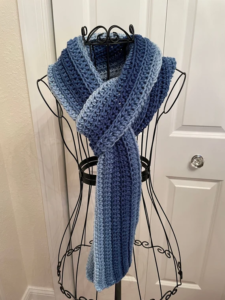
Art of knitting
Art of knitting is an form that promotes limitless creativity and individual expression, not merely a skill. Creating your own knitting designs is a creative and stylish way to express your style, and it can be quite satisfying. We’ll dive into the world of knitting design in this blog article, covering all the fundamentals of designing your own patterns—from brainstorming and sketching to choosing yarns and honing stitches.
1. Seeking Motivation

Inspiration is the first step in any great design. It may originate from several places:
- Nature: An abundance of ideas can be sparked by the colors, patterns, and textures that can be discovered there. Consider the elaborate patterns found in flowers, leaves, and landscapes.
- Fashion: Modern and chic knitwear can be inspired by current fashion trends.
- Art and Architecture: Knitting patterns can be created by interpreting the forms and lines present in these mediums.
- Personal Experience: You can incorporate memories, feelings, and personal tales into your designs to make them genuinely unique.
2. Drawing Out Your Concepts

The next stage is to draw down your thoughts when you’ve been inspired. To get you going, consider these pointers:
- Begin with basics: To start, sketch out the general shapes and lines of your design.
- Add features: Add features, such colorwork, textures, and stitch patterns, gradually.
- Employ graph paper Graph paper can be used to help you see how your pattern will appear when knitted, especially for more complex designs.
3. Choosing Yarns and Instruments

Your pattern may be greatly impacted by the yarn and implements you select:
- Yarn: Take into account the yarn’s color, weight, and fiber composition. Your pattern will drape and feel differently if you use various yarns.
- Needles: The gauge of your fabric will change depending on the size of your knitting needles. Try out various sizes to determine which one best suits your design.
- Extra Tools: You can use tapestry needles, cable needles, and stitch markers to assist create and finish your design.
4. Getting Better at Stitches

It’s essential to comprehend and become proficient with various stitch patterns when designing knitwear.
- Basic Stitches: Begin with the fundamentals, such as the knit and purl stitches, then learn how to combine them to make patterns like seed stitch and ribbing.
- Advanced Techniques: Take a look at more complex methods including colorwork, lace, and cables. These might give your design more depth and appeal.
- Knit swatches of the stitches you have selected to see how they feel and look. This aids in figuring out the gauge and making the required modifications.
5. Establishing a Pattern

It is necessary to write a precise and easy-to-follow pattern so that other people can copy your design:
- Pattern Structure: Materials, gauge, acronyms, and introduction come first. The directions should then be outlined step-by-step.
- Charts and Diagrams: To demonstrate intricate stitch patterns or building methods, use charts and diagrams.
- Test Knitting: To make sure your design is accurate and clear, have someone else test knit it. This might assist in locating any mistakes or unclear directions.
6. Tying Everything Together

Putting your design’s components together entails:
- Assembly is the process of assembling the various components of a garment or accessory. Make sure the edges are done correctly and the seams are clean.
- Blocking: To achieve a professional look and help even out stitches, block your completed work.
- Last Touches: To finish off your design, add any last details like buttons, tags, or embellishments.
7. Displaying Your Design

When your design is finished, it can be very satisfying to share it with the knitting community:
- Publication: Take into consideration posting your pattern on websites such as Ravelry, Etsy, or your personal blog.
- Social media: Make connections with other knitters and exhibit your work on social media.
- Teaching: You can inspire people and create a community around your creations by imparting your knowledge through tutorials or workshops.
In summary
Creating your own art of knitting designs requires imagination and expertise. You may make stunning, one-of-a-kind items that express your story by learning new methods, carefully creating your designs, and taking inspiration from the world around you. So take out your needles, open your mind, and begin creating!
Art of knitting is a rich and complex art form that incorporates creativity, tradition, and individual expression into each and every stitch, surpassing the status of a simple craft. Yarn and needles dancing to a beat spans generations, providing a timeless link to the past and the future. Every knitted object tells a tale, encapsulating feelings and inspiration moments and transforming ordinary yarns into exquisite, useful pieces of art.
Every art of knitting, from the methodical choosing of stitch patterns to the purposeful use of colors and textures, bears witness to the artist’s vision and talent. Through this art of knitting, people can enjoy the contemplative and therapeutic advantages of the craft while expressing their unique style, preserving cultural heritage, and creating treasured keepsakes.
Do learn about the history of knitting also.





Pingback: Unraveling the Mystery of Knit Stitches and Purl Stitches